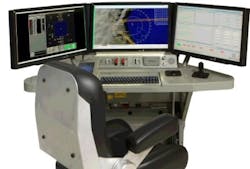Sniper-detection systems to provide perimeter security for Army forces in Afghanistan to come from Raytheon BBN
The system detects incoming supersonic small arms fire for bullet trajectories passing its microphone mast, and for shooters firing at maximum effective weapon ranges. It detects and reports incoming fire and the relative shooter position, including elevation.
The system indicates the azimuth of incoming small-arms fire by actuating a light to show the clock direction, by announcing the shooter's relative position using a recorded voice, and indicating the range and elevation on an LED display.
Boomerang prevents system false alarms caused by road bumps, door slams, wind noise, tactical radio transmissions, and extraneous noise from vehicle traffic, firecrackers, and urban activity. The system's algorithms also suppress return fire alerts by ignoring outgoing shots from around Boomerang's position.
Boomerang is currently employed by U.S. forces in Iraq and Afghanistan, and is available to U.S. military, law-enforcement agencies, municipalities, and to other approved U.S. domestic and foreign organizations.
Raytheon BBN will do the work in Cambridge, Mass., and should be finished by this August. For more information contact Raytheon BBN online at http://bbn.com, or Army Contracting Command at www.army.mil.
